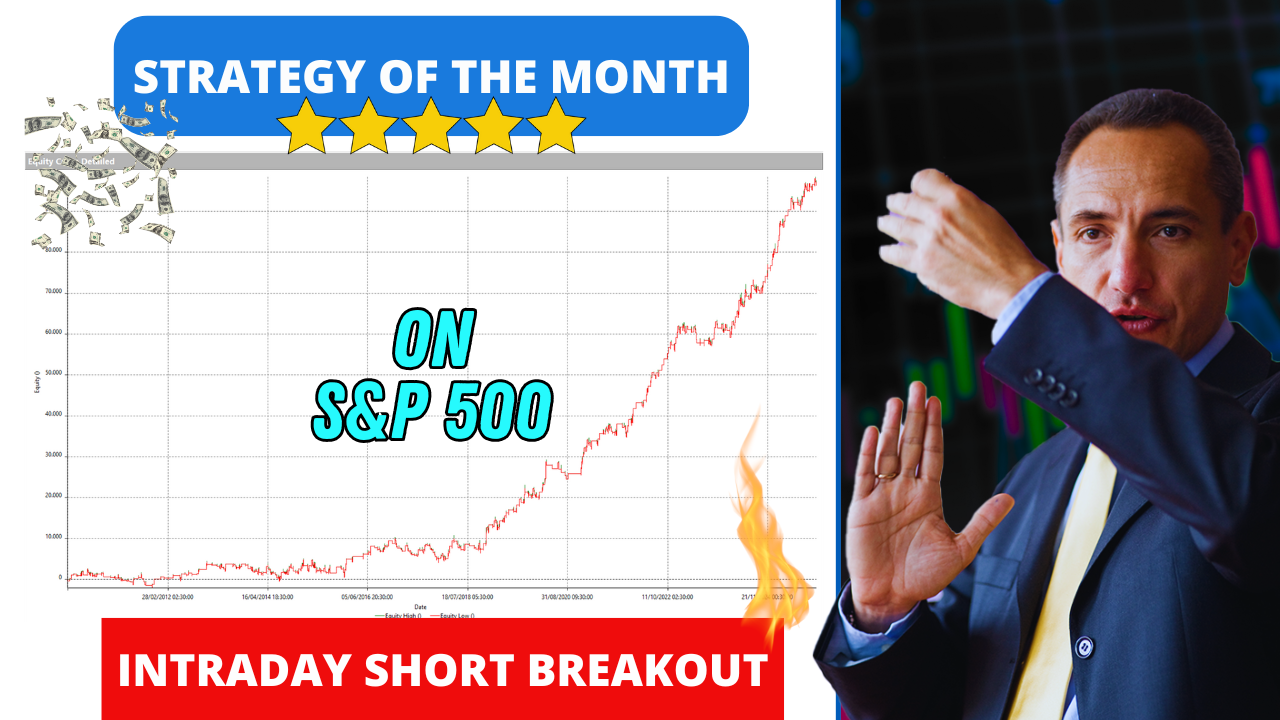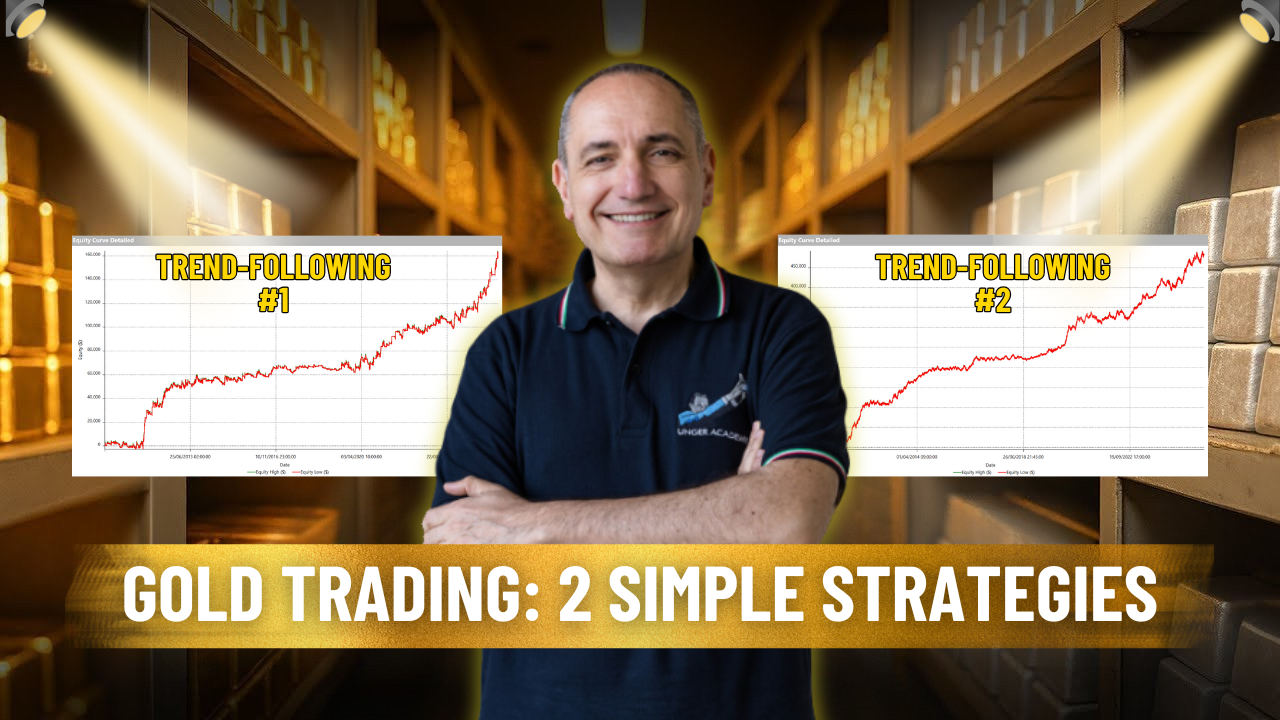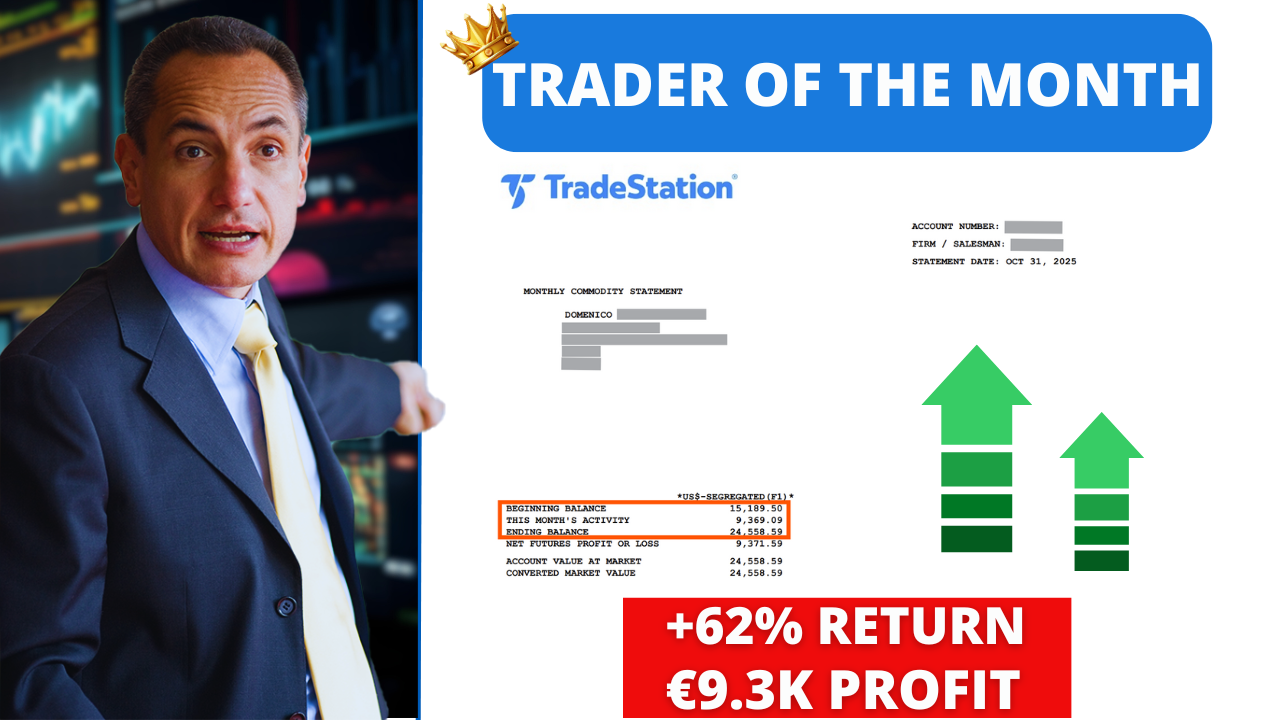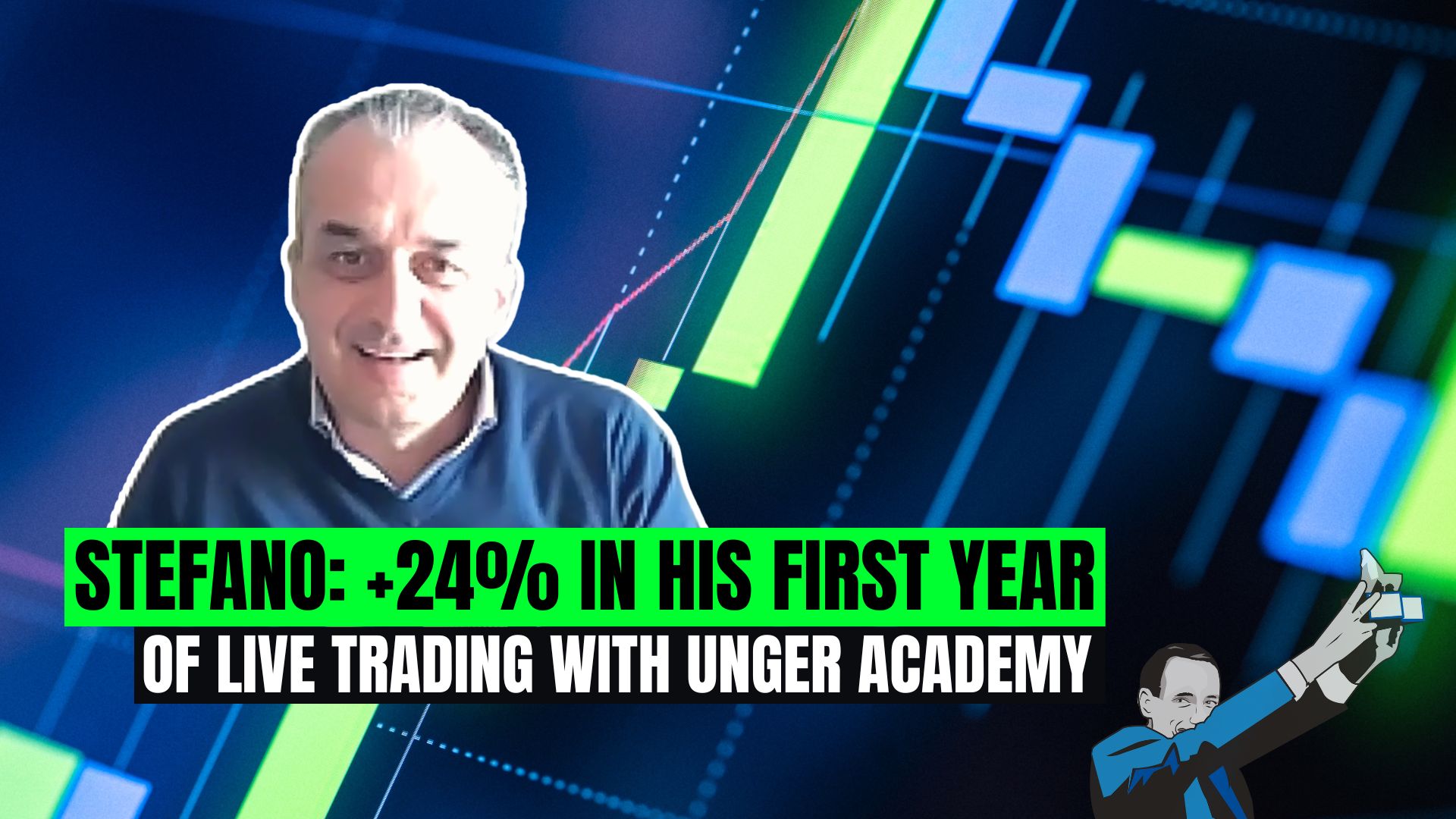Need More Help? Book Your FREE Strategy Session With Our Team Today!
We’ll help you map out a plan to fix the problems in your trading and get you to the next level. Answer a few questions on our application and then choose a time that works for you.
In this article, we’ll dive into the results of our “Strategy of the Month” contest for January 2025. We’ll explore the winning strategy, along with another standout submission selected from the many entries we received.
Our goal is to provide valuable trading insights by analyzing the core logic behind these strategies, the markets they target, and, of course, their performance metrics.
The “Strategy of the Month” contest is an exclusive competition for Unger Academy students, recognizing the best trading strategy developed using the Unger Method™. Every month, students compete for a chance to win a €1,000 Amazon gift card!
If you’re interested in accessing the code for the winning strategies, consider joining the Unger Strategy Club. As a member, you’ll gain access to the open-source code for each month’s winning strategy, all past winners, an exclusive live Masterclass each month, and a detailed video breakdown of key rules from our portfolio strategies.
For even deeper insights, Unger Strategy Club VIP members receive all of the above, plus exclusive open-source codes for all contest entries that pass review by Unger Academy coaches.
Now, let’s take a look at the top strategies submitted for January!
Trend Following Strategy on the Nasdaq (NQ)
Among the strategies submitted this month that didn’t win the top prize, we’ve selected David’s strategy for an honorable mention—congratulations to him for his great work!
This is a Trend Following strategy applied to the Nasdaq futures contract (NQ) on a 5-minute time frame. To implement it correctly, you’ll also need to plot a secondary data series of the NQ on a 1,440-minute time frame.
The system’s core mechanism is based on a Donchian Channel, calculated over the last 12 periods—which, on a 5-minute chart, correspond to the last hour.
The strategy enters a long position when the price breaks above the upper band of the Donchian Channel and goes short when the price falls below the lower band—provided that all system filters allow it.
Figure 1 – Examples of trades executed by the Trend Following strategy on Nasdaq futures.
To filter trade entries, David implemented a time window that excludes the first and last hours of the session, along with an operational pause that prevents market entries for approximately seven hours during the US overnight session.
He developed the strategy asymmetrically, incorporating non-mirrored patterns for long and short trades. To do this, he leveraged the PatternFast lists provided by the Academy. Since this is an equity index, this approach is allowed by the Unger Method™.
Additionally, trades are only executed if prices meet the following two conditions:
1.For long trades, the high of each of the last four bars must be above the upper limit of the Donchian Channel. For short trades, the low of each of the last eight bars must be below the lower limit of the Donchian Channel. This filter ensures that entries are aligned with the prevailing short-term trend.
2.The session volume from two days ago must be lower than the 100-day average volume. Special attention is required around futures rollover dates, as volume shifts from the expiring contract to the next one. This could distort the logic of this filter, particularly during the four quarterly rollovers of US equity index futures.
Trades are exited upon reaching stop-loss, breakeven, or at the end of the session if they remain open for more than three days.
Below are the key performance metrics of the strategy, tested on data from January 1, 2010, to December 31, 2024. The results stand out for an excellent Net Profit/Max Drawdown ratio (around 20), an average trade size of approximately $575, and strong consistency in performance.
Figure 2 – Equity Line of the Trend-Following Strategy on Nasdaq Futures (NQ).
Strategy of the Month for January 2025: Trend Following on Gold Futures (GC)
Now, let’s take a look at this month’s winning strategy, created by Daniele—congratulations to him for securing the €1,000 Amazon gift card!
This is an intraday Trend Following strategy on Gold Futures (GC) with a 60-minute timeframe. The strategy takes only long positions when the price breaks above the upper Bollinger Band, which is calculated using 40 periods and 2 standard deviations.
At Unger Academy, we always teach the importance of following Bollinger’s classic parameters—which use 20 periods and 2 standard deviations—for constructing these bands. To ensure consistency, we also tested the strategy with these default settings, and it still delivered solid performance.
Figure 3 – Examples of trades executed by Daniele’s Trend Following strategy on Gold Futures.
The trading strategy is filtered through a single pattern from the PatternFast list, which utilizes the Daily Factor and requires a volatility compression in the session prior to market entry.
Trades are closed based on either a stop loss or take profit, or if the price retraces below the upper Bollinger Band until it touches the 40-period moving average (which, as a reminder, represents the median value between the two Bollinger Bands).
In an uptrend, prices generally remain between the moving average and the upper Bollinger Band. Therefore, we consider it appropriate to exit a long position if the price drops below the average value of the past two days (approximately 40 hours).
It’s important to note that, based on how Daniele coded the strategy, exiting at the median Bollinger Band value cannot occur within the same session as the entry. In any case, a stop loss is always in place to limit the maximum loss. Allowing an exit within the same session as trade initiation would significantly worsen the strategy’s metrics, reinforcing the idea that it’s better to wait for a potential price rebound.
The core mechanism of the strategy is simple yet highly effective.
Even though no maximum trade duration has been set, the longest trade lasts seven sessions, keeping risk under control.
Below are the key performance metrics of the strategy based on data from January 1, 2010, to December 31, 2024, highlighting its strong results, particularly in recent years.
Figure 4 – Performance report of Daniele’s Trend Following strategy on Gold Futures.
Figure 5 – Equity Line of Daniele’s Trend Following strategy on Gold Futures.
Takeaways
A big congratulations to Daniele, who takes home this month’s €1,000 Amazon gift card!
We hope this article has been helpful and inspiring!
If your goal is to create trading strategies like the ones we’ve just discussed, you’re in the right place. As you progress in your learning, you’ll also have the opportunity to participate in our monthly contest exclusively for Unger Academy students and compete for a €1,000 Amazon gift card.
Remember, if you want access to the code for the winning strategy and the top submissions in the contest, you can join the Unger Strategy Club. Check out all the features of this service at www.ungerclub.com.
That’s all for now—see you in the next “Strategy of the Month” installment for more actionable insights!
If you’d like to learn more about the “Strategy of the Month” contest, our monthly challenge for Unger Academy students awarding a €1,000 Amazon gift card to the best strategy developed using the Unger Method™, Click here.
Or, if you’re curious about the past winners, Click here.
Transcription
Need More Help? Book Your FREE Strategy Session With Our Team Today!
We’ll help you map out a plan to fix the problems in your trading and get you to the next level. Answer a few questions on our application and then choose a time that works for you.

.png)
.png)
.png)
.png)
.png)






